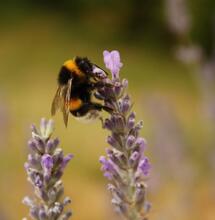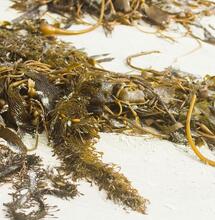Breeding Auto-Flowering Cannabis Strains

There is a trait in some Cannabis varieties that will allow the plant to flower, regardless of photoperiod, known as 'auto-flowering'.
There is a trait in some Cannabis varieties that will allow the plant to flower, regardless of photoperiod, known as 'auto-flowering'.
|
Auto-flowering is a nice trait with which to work, as it is a simple one and easy to observe. |
Auto-flowering varieties are useful for midsummer harvests - when started in the springtime in temperate climates - and allow for outdoor flowering in areas with a short growing season. This auto-flowering trait traces its roots back to Cannabis ruderalis.
For every simple Mendelian trait, there are two genes. Each gene comes in a dominant and a recessive form; an important thing to note is that the auto-flowering trait is recessive. If the auto-flowering trait is labeled with 'As', the dominant form is expressed by the capital 'A', and a lower-cased 'a' is used to represent the recessive form.
For a given plant, these genes will be in one of four combinations:
AA: 'True-bred' not to auto-flower (homozygous for photo-dependence)
Aa: Heterogeneous for auto-flowering, and since the dominant form is not to auto-flower, the plant will be photo-dependent
aA: Heterogeneous for auto-flowering, and since the dominant form is not to auto-flower, the plant will be photo-dependent
aa: 'True-bred' for auto-flowering (homozygous against photo-dependence)
|
Cannabis will breed 'true' for the auto-flowering trait if both parents show the trait. |
Since auto-flowering traits will only appear in the plant if it was 'true-bred' for auto-flowering, any two auto-flowering plants that are crossed will have auto-flowering offspring. This is because for the mother and father to both show the trait, they must both be 'aa' for that trait. There are four combinations possible (aa, aa, aa or aa), but in each case, each parent contributes the recessive form of the gene, since that is all they have to give. No matter which parent contributes which gene, it will be an 'a'.
The reverse is true for two 'true-bred' photo-dependent plants ('AA'). If the only form of the gene available from the parents is the dominant form, then all the offspring will have the dominant form and be reliant upon lighting schedules to determine when to flower.
When a Cannabis plant that is 'true-bred' for auto-flowering is crossed with a plant that is 'true-bred' for photo-dependence are crossed, the offspring will not auto-flower. This is because if one parent has both genes for photo-dependence ('AA'), and the other for auto-flowering ('aa'), then the offspring will all be 'Aa'. No matter which of the four combinations are used (Aa, Aa, Aa or Aa), the offspring will receive a dominant 'A' from the first parent, and a recessive 'a' from the second.
With these 'Aa' seeds, there are two alternatives when the goal is to breed for auto-flowering: they can either be crossed with an auto-flowering plant (aa), or with one of their siblings (Aa).
If they are crossed with an auto-flowering plant, then fifty percent of the seeds will auto-flower. This is because with the parents 'Aa' and 'aa', the four possible combinations are: 'Aa' and 'Aa', which will not auto-flower, and 'aa' and 'aa', which will.
If instead the siblings are crossed - which is often done if traits from the non auto-flowering plant are desired - then both parents will be 'Aa' for the auto-flowering trait. The four combinations will be: 'AA', 'Aa', 'aA' and 'aa'. Since auto-flowering is recessive (loses ties), only the 'aa' (twenty-five percent of the offspring) will auto-flower.
Auto-flowering is a nice trait with which to work, as it is a simple one and easy to observe. With a little planning and observation, it can even be fun. For more information, research 'Mendelian genetics' and the punnet square.
Peace, love and puka shells,
Grubbycup



